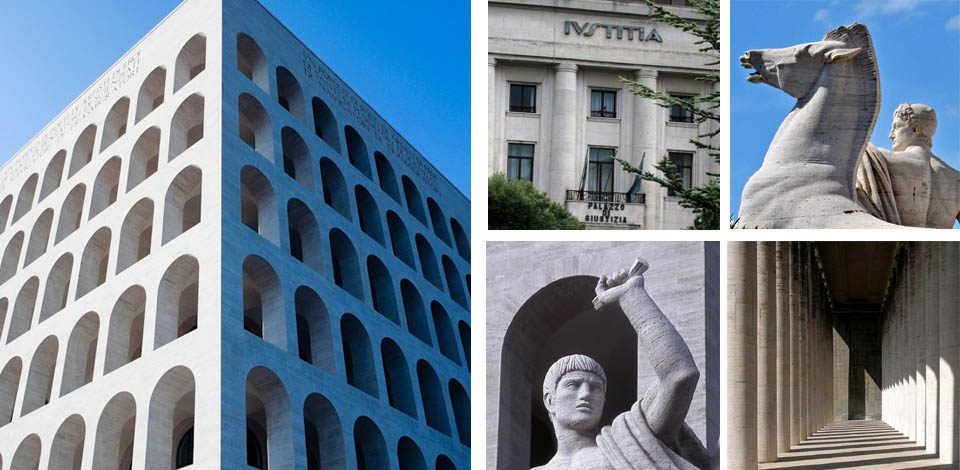Italian Fascist Architecture
Italian fascist architecture are constructions built to impress. And the intimidating buildings and monuments can still be seen all over the country.
A walk around most Italian towns and cities will take you past buildings made lifeless and intimidating by their sheer size and symmetry. These monstrosities are an important part of modern Italian architecture and the still visible remnants of Mussolini’s fascist regime.

A daunting public building in Taranto
Ambitious Public Works
I often walk by the Palazzo Governo in Taranto, and every time I avert my eyes. The building is so frightfully brutal it overshadows the natural attractions of the Lungomare promenade in spite of starlings, palm trees and a panoramic view of the sea. A similar violent clash between massive man-made structures and the natural and historical surroundings can be experienced in most other Italian cities and often we are not just talking about single buildings but entire villages.
The Mussolini countered the Great Depression with ambitious public works, such as draining the Pontine Marshes, reclaiming land and creating about 45 new homesteads of varying sizes in Lazio.
EUR in Rome
The most striking example of fascist architecture in Italy is perhaps the EUR in Rome. The buildings in this district were erected in connection with the 1942 World Fair as a celebration to twenty years of fascism, with the Square Colosseum or the Palazzo della Civiltà Italiana as its monumental centerpiece. The concrete building which looks exactly the same from all angles with 9 colonnades in 6 tiers now belongs to the Ministry of Culture and it is used for exhibitions.
Leave a Reply
Want to join the discussion?Feel free to contribute!
Leave a Reply Cancel reply
This site uses Akismet to reduce spam. Learn how your comment data is processed.




Interesting post. I hadn’t appreciated Mussolini’s regime included changing the landscape via monster buildings.
No, they are quite striking. Wonder how they will be seen 2000 years from now.
These buildings are far from being ‘monster’ like (as you’ve put it). If there’s something to be truly said about modernity’s value: looking no farther than the austere beauty of these edifices.
Yeah. The so-called “Stile Impero”, imperial style, is found in any Italian city. I wouldn’t consider it horrific per se, but it’s for sure out of place when found merged with elegant XIX century buildings or, God forbid, thrown in the middle of a renaissance neighborhood. Worst part, in my opinion, are the interiors thou. There you can find fluid shapes mixed with the martial shapes typical of the facade. Just horrible.
Go for some task related to the army or to academic world in any Italian city, and you’ll find yourself inside one of those buildings, sooner or later. Then look around and you’ll still be able to feel the atmosphere of a regime which had grandeur in its dreams only.
Thanks for the insight. I would be scared to enter those buildings, maybe because I have not attended university in Italy. To me they are associated with police, the military,the justice system and other power institutions.
These do look out of place and lack personality. This must look even worse during those dark winter days. I think I would have the same reaction as you in seeing these buildings.
Yes, it is funny how architecture affects your mood sometimes.
I can see why you’d avert your eyes – they look clumsy but they probably did what they were supposed to do — intimidate.
Exactly.
I’m ambivalent as to whether buildings like this should be left standing. Monstrous yes, but also a part of history, even if it isn’t a nice part. Reminds me of Ceaucescu’s Palace of Parliament in Bucharest.
I wouldn’t want them destroyed for the same reason, but I think it is important to see them in a historic context.
I lived in EUR and yes, walking around the part of the EUR with the monumental buildings does cause one to feel very, very small.
I can’t imagine what it must be like coming home through that area in the middle of the night when the streets are all deserted.
the taranto building in the first picture was the ministry of colonies.
i had some working meetings inside that buinding so i could visit it carefully: fascinating architecture and wonderful details.
How interesting. I pass that building often, and can only imagine what it must be like to walk through those enormous doors.